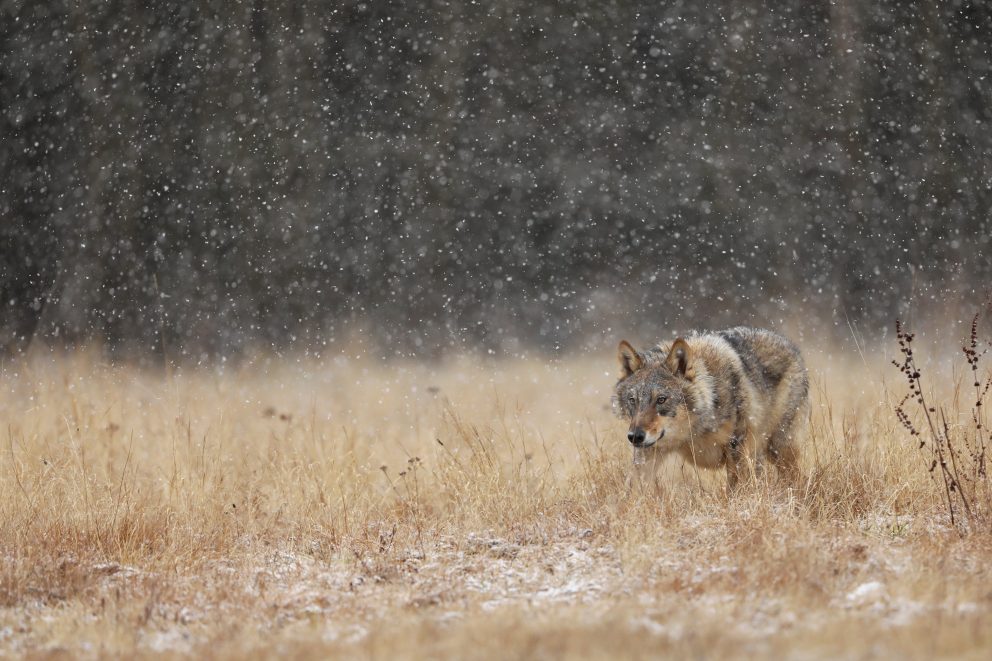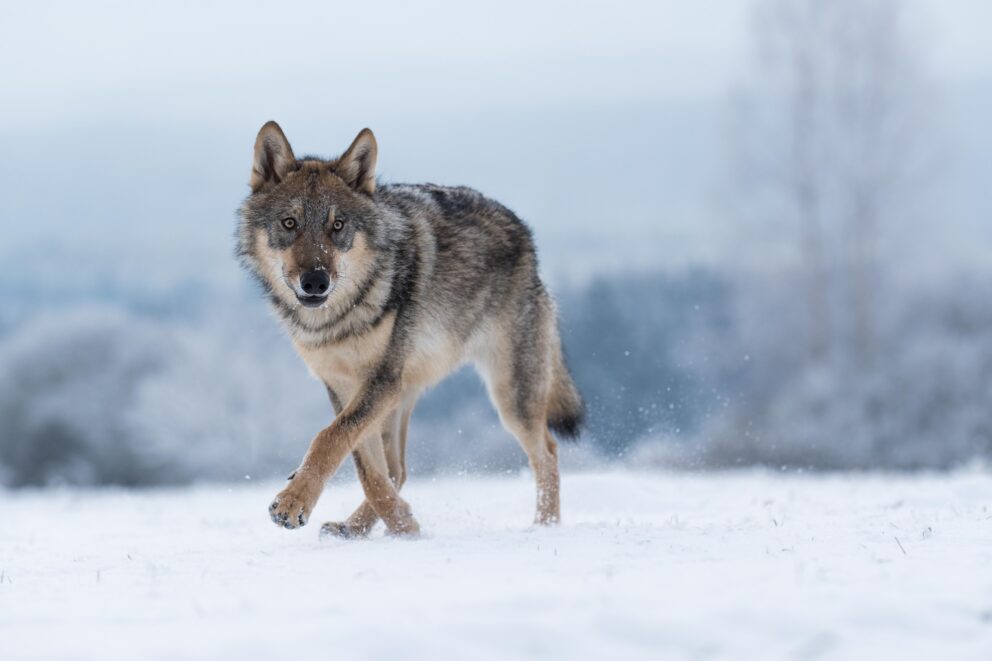- SCIENTIFIC NAME
- Canis lupus
- CLASSIFICATION
- Mammal
- LIFE SPAN
- 10-13 Years
- SIZE
- 34-51” | 40-175lbs
- STATE CONSERVATION STATUS
-
- State Protected
- FEDERAL CONSERVATION STATUS
- Least Concern
- GAME STATUS
- Game
- GAME TYPE
- Illegal to harvest in NV
- Washoe
- Humboldt
- Pershing
- Churchill
- Mineral
- Lyon
- Douglas
- Carson City
- Storey
- Elko
- Lander
- Eureka
- White Pine
- Esmeralda
- Nye
- Lincoln
- Clark
Habitat & Range
Nevada currently does not have an established gray wolf population but sporadic sightings have occurred. Gray Wolves can habituate almost any habitat including tundra, woodlands, forests, grasslands, and high deserts; their habitat depends on prey availability and human disturbance.
- Cold desert shrubland and sagebrush
- Pinyon juniper forests
- Upland Forests
Threats
- Disease
- Habitat Degradation
- Human Conflict
Natural History
Wolves will work with their pack to take down larger animals such as deer, elk and moose. They can consume up to 20 pounds of meat at a time and at each meal! Their diet also consists of smaller mammals, birds, fish, lizards, snakes, and fruit. Gray wolves live in hierarchical packs consisting of the alpha pair that breeds, their offspring (called “pups”), and other non-breeding adults. There are usually five to six individuals in a pack. A litter of approximately five pups are born in early spring. Their territories can range from 50 to 1,000 square miles.
Fun Facts




